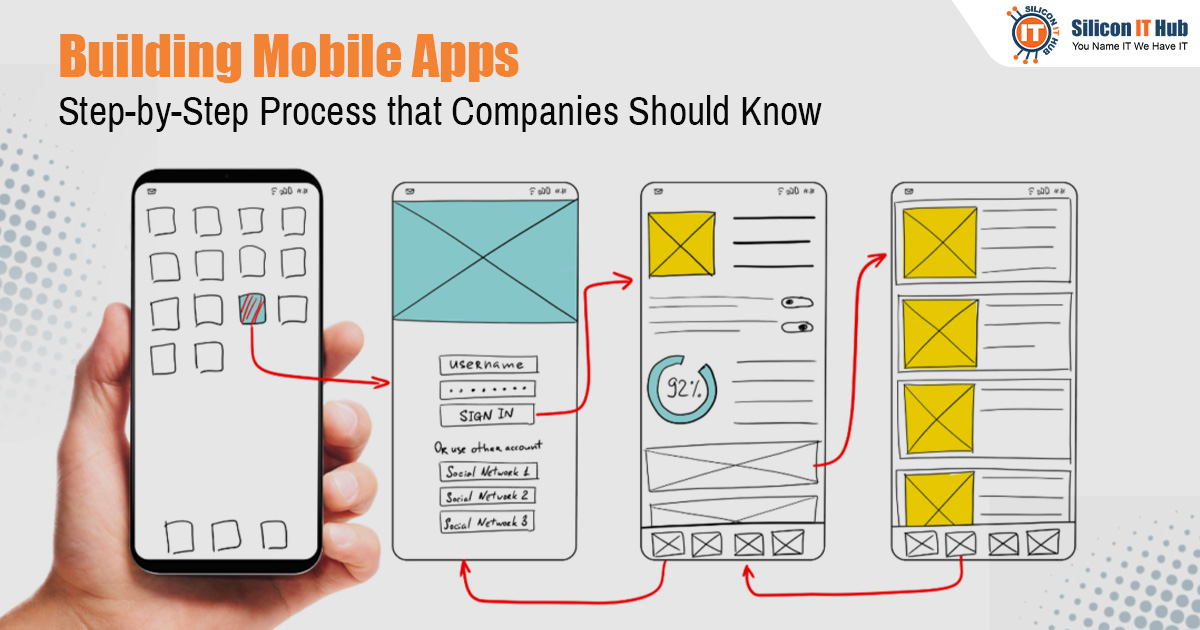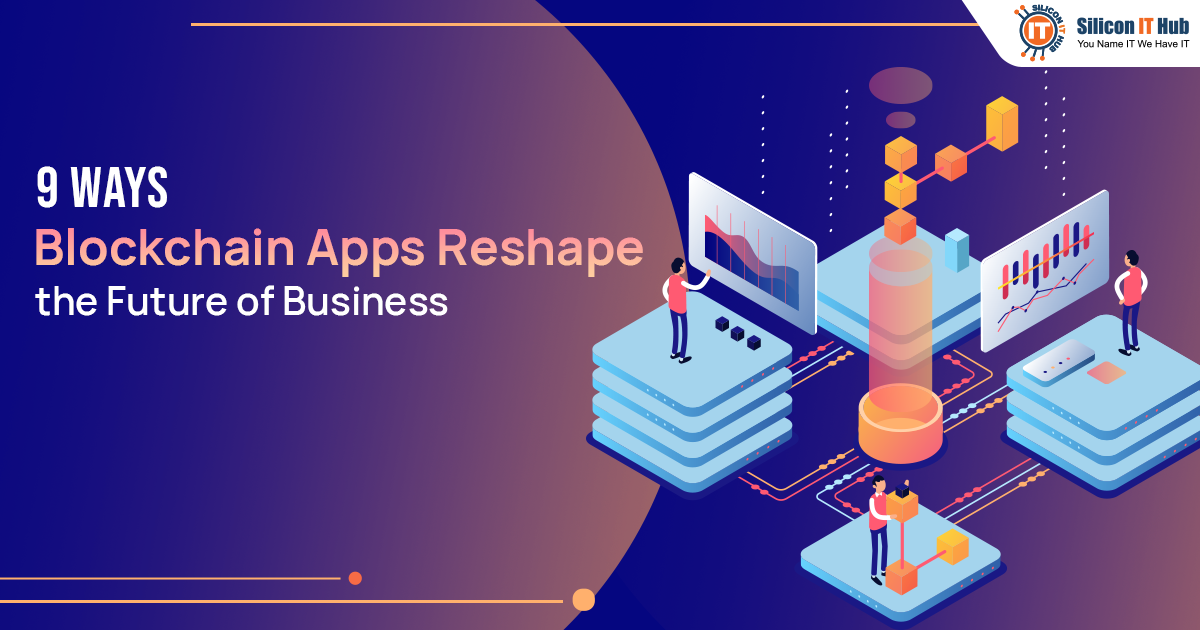

Your Detailed Guide to Mobile Application Development Process

Introduction
The dependence on mobile apps keeps increasing in the digital age. Whether individuals or enterprises, a customized mobile app has become indispensable for accomplishing tasks and streamlining activities. This is a major reason why mobile apps are expected to generate a whopping revenue of USD 233 billion by 2026 . It is fair to mention that mobile app development services will play a vital role in achieving this target by advancing the development process.
In this blog, we will dig deep into the key steps of the mobile app development process. Let’s start with the scope of custom mobile apps for modern businesses.
Scope of Customized Mobile Applications
Tailored mobile apps perform multiple functions. On one hand, they can bring automation to various tasks, and on the other hand, they act as a cost-effective marketing tool. Custom business apps can increase sales and revenue by reaching a huge audience globally and optimizing internal processes. These apps are also useful in improving customer services and reducing operational expenses.
Mobile app development companies can make an app as per your business needs, market trends, and competitors’ activities.
Key Steps of the Mobile App Development Process
Mobile application development companies follow the following points in developing a custom app from scratch.
1. Ideation and Planning
This is the first and foremost step. We can subcategorize it into four steps
Objective Identification
It starts with identifying objectives for developing an app. You can find the answers to some common questions like-
What problem will my application solve?
What are the long-term goals that I want to achieve through a customized app?
What will be the target audience?
Answers to these questions will define the app development objectives and you can get the initial idea for your app.
Competitor Research
This is a crucial step that involves exploring the apps of existing or potential competitors. It enables you to skip some common mistakes that have been made within your business domain or industry sector. Also, you can explore market trends. A reputed mobile app development company can assist you in both aspects.
Platform Selection
This is one of the most important factors to consider. You must select either a native platform for developing an Android /iOS app or a cross-platform framework for building a hybrid app. It is better to consult a leading mobile app development services provider to select the right platform for your upcoming app development project.
Making a Roadmap
Now comes the last stage of the first phase of the app development process. You can make a roadmap or blueprint of your project based on insights you have gathered by following the above steps. You can also add the list of desired features, budget, technology stack, and even app monetization strategy in your roadmap.
2. Designing and Wireframing
Let’s face it. A UI/UX design can make or break your application. In other words, the success of your app depends on user experience, and engaging yet simple design can play a vital role in improving experiences. A messy interface can drive users away from the app. Therefore, you need to focus on designing and its core areas-
IA (Information Architecture)
An in-house team of designers initiates the process by establishing the necessary data, display, and methods of user interaction. It is known as IA and involves workflow diagrams for ensuring seamless navigation.
Wireframe Development
Wireframes are digital sketches that show the skeleton of the app. Wireframe development focuses on the UX and aesthetics of the app and acts as a blueprint for a smooth user journey.
Style Guides
These guides are useful for ensuring brand consistency and even the look and feel of the app. These guides have all the necessary design elements including fonts, spacing, buttons, colors, widgets, and the like.
Mockups
They are sophisticated visuals created using the style guide. It gives you a perfect picture of your app’s appearance.
Prototype Building
It is the final step of mobile app designing. It involves making prototypes that reflect the combination of user experience and workflows or a feature list. It can reveal flaws in design or functionality before initiating app development.
3. Application Development
It is the most important stage in the entire process of making customized apps. The mobile app development stage consists of two parts- frontend development and backend development.
Front-end Development
Front-end is about the appearance of the app. Simply put, front-end development involves building a UI (User Interface) of the app. Platform-specific and cross-platform are two main approaches to front-end development. Another hybrid approach comprises web app development that runs within a native shell.
Backend Development
This stage is responsible for the app’s functionality or performance. It has direct relation with the UX (User Experience). The backend stage involves the creation of databases and other server-side objects. This is a crucial stage of the app development lifecycle and makes your app highly scalable in the future.
4. App Testing and QA
Design and development are crucial for making an engaging and functional mobile app, but performance testing can make it ready for deployment. Every owner or enterprises want to ensure that the app solution is stable, secure, and free from bugs. There, app testing and QA come into the picture.
Talking about the testing process, your mobile app undergoes five testing methods. They are-
Functionality
It involves checking all the features of the application and ensuring that the app works well across all devices across specific platforms.
Performance
It is about checking the app’s responsiveness and its capability to handle an increase in the number of concurrent users.
Security
Healthcare and fintech apps require additional safety features to comply with prevalent laws and regulations. Security testing can assist app development companies to know the status of data protection in the app.
Compatibility
It is imperative to make sure that your customized app is capable of running on various devices across specific platforms.
Initial Users
It is always beneficial to test your application with its initial users before deployment. A mobile app development company can arrange a focus group or launch a beta version for initial users. Their feedback can assist app developers in making the necessary changes before deployment.
5. Deployment
This is the final stage of app development. Most companies consider app maintenance and updates as additional or value-added services.
The mobile application deployment strategy initiates with submitting your app to Apple’s App Store or Google Play Store. Companies can go for separate distribution for their business or enterprise-grade apps. When apps go on a specific app store, the mobile app development company needs to make sure that the app follows all the guidelines and standards of respective app stores.
6. Maintainance and Updates
When your app has desired features and seamless performance, more users will download it. You can monitor the app’s performance and prioritize its regular maintenance. Another point is to bring an updated version of your app periodically. An app development company can assist you in bringing updates to your app to maintain its performance and popularity.
Concluding Lines
A feature-rich mobile app is your robust business representative in the online world. It is fair to mention that you can utilize your app to attract more people toward your business and promote your services online cost-effectively. However, mobile app development is costly and requires a specific budget for maintenance and updates. It is, therefore, necessary to consider all the necessary aspects before investing in app development. Hope this step-by-step guide on mobile app development will help you understand the process and make the important decision.
Silicon IT Hub is a renowned mobile app development company. We build enterprise-level apps with advanced features and seamless functionality. Want to know more about our services? Simply send us an email at info@siliconithub.com and we will get back to you with the necessary details.
FAQs
Your Questions Answered about
Latest Blog

Key Features and Benefits of Logistics Management Software
In this post, we will see the features, benefits, and trends in logistics management software. Before moving ahead, let’s understand logistics management and its importance. ...

NFT and Blockchain App Development Services- Aspects You Need to Know
In this post, we will cover the key benefits and disadvantages of NFTs with the highlight of future trends. Let’s understand the concept of NFTs and its importance in blockchain app development servic...

Top Business Benefits of Blockchain Application Development Services
In this post, we will dig deep into the benefits of blockchain app development for modern businesses....




